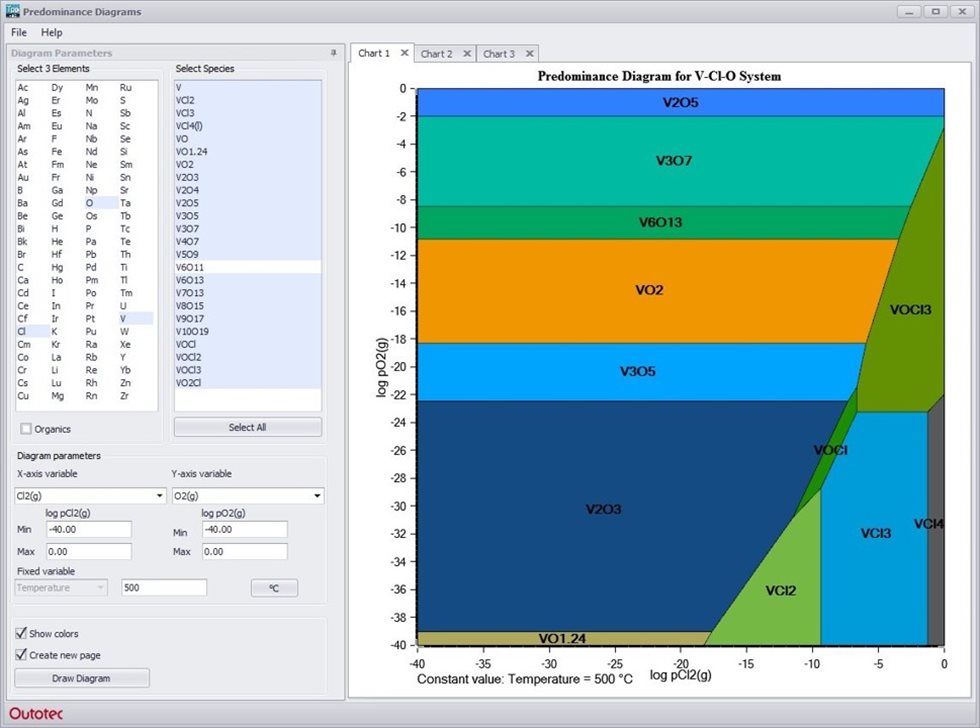Stability Diagrams Module
Tpp / Lpp – Stability Diagrams Module

Supporting your operations, from plant design expertise to equipment, parts and services for every stage of your process.
Are you looking to increase production, reduce risks, lower operating costs and enhance environmental performance? Then you are in the right place.
From the design and supply of products for a greenfield plant, to the addition of a single machine for an existing production line, we are here to help.
Rely on OEM experts because not all parts are created equal. Spare and wear parts built to perform.
Helping you get the most out of your equipment and processes.
HSC Chemistry stability diagrams module can draw two types of phase stability diagrams. The Tpp Diagram module calculates the diagrams on the basis of minimum Gibbs energy (area graphics) and the Lpp Diagram module calculates the phase stability boundaries as lines based on the reaction equations (vector graphics). These two modules have their own option buttons in the HSC main menu, i.e. Tpp and Lpp Diagram buttons.
The Tpp diagram module draws temperature partial pressure diagrams (T-p diagrams) as well as p-p diagrams with partial pressures on both axes. The old Lpp module only draws diagrams with selected partial pressures on both axes. Both these modules offer slightly different benefits and limitations; for example, the old Lpp module gives exact coordinates for the phase boundaries but the new Tpp module gives illustrative painted area diagrams and also a versatile T-p axis option.
The Tpp Diagram module calculates phase stability diagrams using partial pressures on both axes or temperature on the x-axis and partial pressure on the y-axis. This module calculates the diagram on the basis of minimum Gibbs energy. However, it does not check each x- and y-point in order to decrease calculation time. The calculation is made recursively using the preset resolution and a specific logout algorithm.
The Lpp Diagram module draws isothermal phase stability diagrams of three element systems, also known as predominance area diagrams or Kellogg diagrams. For example, a Ti-Cl-O diagram may show the stability areas of titanium-containing substances as a function of Cl2(g) pressure and O2(g) pressure in the atmosphere.
